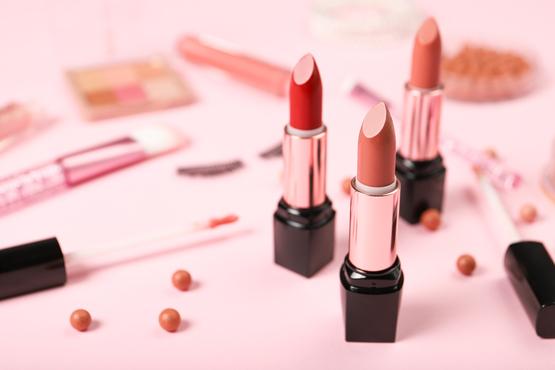Cosmetics colors are an important part of self-care products that help one look great. They fall into the category of coloring ingredients used in cosmetics for make-up, skincare, personal hygiene, hair care, fragrance, and oral care. Products such as lipstick, blushers, lip balms, foundation, contours, highlighters, concealers, eyebrow pencils, eyeliners, etc., use cosmetic colors and are all commonly used these days.
Classification of Cosmetic Colors
Cosmetic colorants can be classified into two categories.
- Organic colors were originally derived from coal sources, and nowadays, natural materials, such as carrot oil, beet extract, and henna, are used to produce organic colors. These days organic colorants are getting popular among people and are available in a wide variety of shades. They can be found as water-soluble, oil-soluble, or insoluble (lakes) types and can be utilized in solid and aqueous products.
- On the other hand, inorganic colors are made from insoluble metallic compounds derived from natural sources or synthesized ones. They are considered harmful to the environment & living creatures.
After having a look at the types of cosmetic colorants, let us learn about the different trends in cosmetic colors.
DYES
Dyes are water-soluble chemicals that show their true colors when dissolved. They do not mix with oil and are present in granular, powder, and liquid forms. Dyes are prevalently used nowadays to impart color to paper, leather, textiles, and many other substances. Dyes are the perfect choice for coloring cosmetic soaps because of their dissolution properties.
ADVANTAGES OF NATURAL DYES
- They are biodegradable and do not cause pollution when disposed of.
- Some dyes are renewable and environment-friendly.
- Natural dyes have excellent soft hues and shades that give a calm and soothing look.
LAKE
Lakes are dispersive pigments that are made from depositing water soluble dyes with metal salts as substratum, forming a concentrated compound. These are insoluble in water but can be dispersed in oil, fat, and sugar. They can also be dispersed in chemicals such as propylene glycol, glycerin, and sucrose. Common usage of lakes is in products such as balms, chocolates, or compound coatings like tablets. They are stable at pH 4 to 6 and more resistant to light and heat. Their shelf-life ranges from 24 to 36 months. However extended shelf-life upto 8 years (96 months) for lakes manufactured with synthetic water soluble dyes manufactured by Neelikon.
Advantages of Lake Colour
- Lakes are more stable than corresponding water-soluble colors
- Produce more vivid colors
- They can be easily combined and mixed with cosmetic oils.
- They are not water-soluble; hence, spilling the cosmetics is not an issue with them.
- They have an adaptive quality.
- They do not bleed easily.
- Tolerant to UV lights.
- Less likely to stain hands in bath bombs.
PIGMENT
Pigments are compounds that absorb light of a particular wavelength and then emit various colors on a substrate or medium. They are intensely colored and make use of the optic phenomenon of reflection and transmission.
Here are the two types of pigments
Organic pigments
These are carbon chains and rings that contain metallic elements to stabilize the properties of compounds. However, they can also contain metallic elements that help stabilize their properties for effective usage.
Inorganic pigments
These are metallic salts precipitated from solutions and have a larger particle size than that of organic pigments. They are used to transmit colors to cosmetic items, paints, coatings, plastics, inks, etc., while also improving their properties, including opacity, heat stability, tinting strength, etc.
Advantages of Pigments
Now let us have a detailed look into the advantages of using pigments
- The color used is economical
- They are environment-friendly, safe, and less toxic.
- They maintain uniform color for long periods of time and withstand climatic pressures such as heat.
Comparative Table – Difference between Dyes, Lakes, & Pigments
| Dyes | Lakes | Pigments |
| Water soluble | Made by mixing water soluble dyes with metal salts as substratum. Hence, they are insoluble in water but dispersive in oil. | Insoluble in water. |
| Formed by functional groups bonding between dye and substrate. | They are made from a water soluble dye and extended on substrate material, such as aluminum or barium. | They require a binder. |
| Have better longevity | Have the best longevity of the three. | Have shorter longevity |
| Organic (Synthetic and Natural) | Lakes are only man-made (manufactured). Hence they are also known as artificial colors. | Inorganic. (The organic ones have some inorganic material for stability.) |
Conclusion
We have already enumerated the different types of cosmetic colors in trend. You can check the pros and cons of each cosmetic color and decide which you want to go for.
With new advances in the cosmetic industry, more environment-friendly and sustainable products are the call of the day. It is why Neelikon manufactures organic & environment-friendly cosmetic colors with a wide range of varieties & shades. Neelikon believes in protecting the environment by reducing the use of inorganic or other harmful colors in the industry and introducing cost-efficient and user-friendly colors.
To know more about our product range of cosmetic colors, please write us at info@neelikon.com


